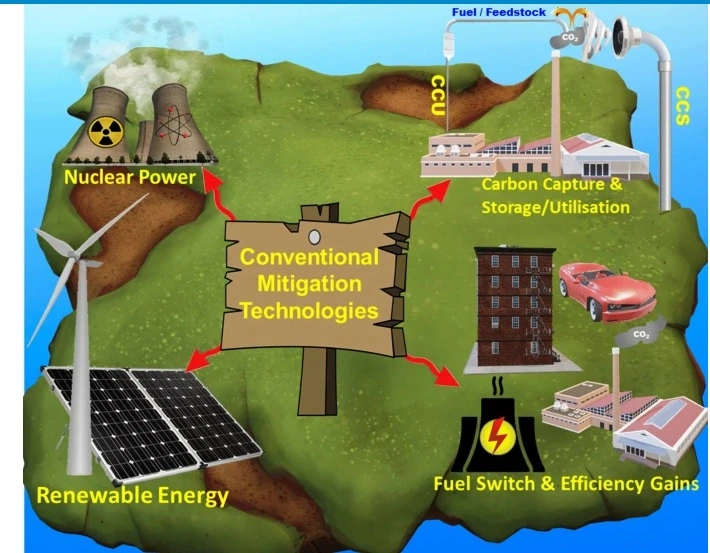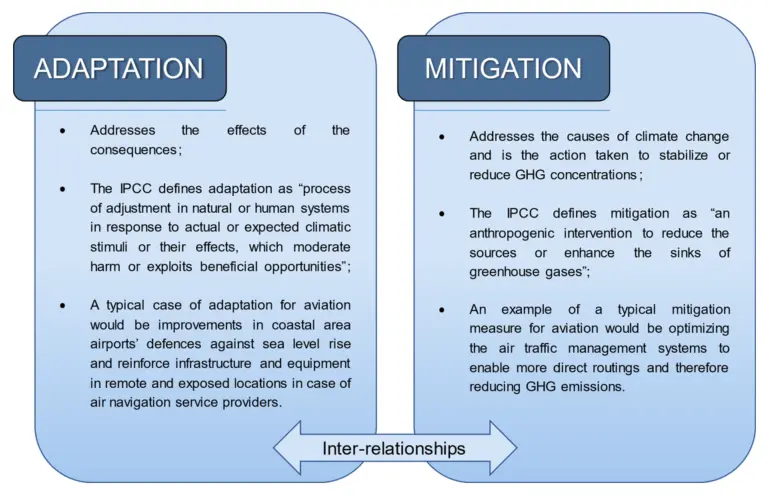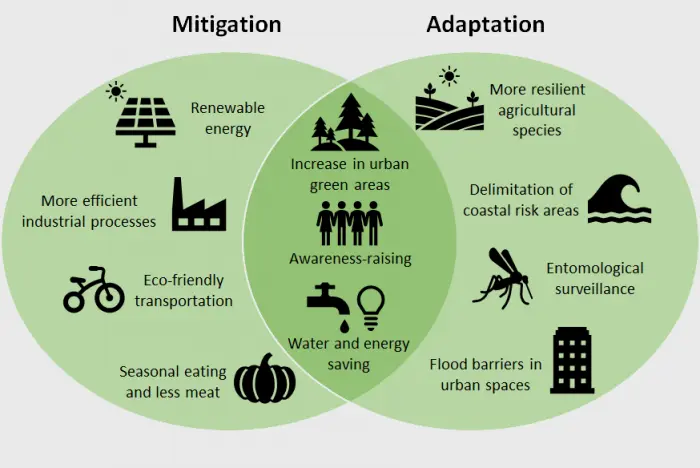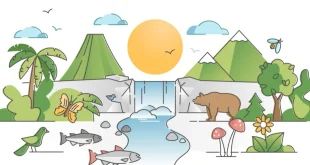
Climate Change Mitigation
Climate change mitigation discusses the measures taken by government organizations and non-government companies to remove greenhouse gases (GHGs) from the atmosphere. Some of the Mitigation measures are somehow more difficult than others, e.g. stop burning fossil fuel. Some people look at mitigation actions as they should be tackled as a zero-sum game, where the cost of reducing them increases with each action to reduce greenhouse gas emissions of climate change. Climate change adaptation and mitigation are both equally essential and time-sensitive and we need to do both.
Climate Change Adaptation
It refers to the wide range of activities that people can do to reduce the negative impacts of global warming on the climate, communities, public health, the economy, etc. Altering to these impacts needs practical solutions customized for each country, region, or community. Climate adaptation includes procedures such as the development of new varieties of drought-resistant crops, the designing of better flood-resistant buildings to protect coastal cities or riverine communities, early warning systems in flood-prone areas, and ecosystem restoration.
All of these measures require political will and collaboration between governments, businesses, and the community. However, regardless of the lack of an instant financial return, experts agree that the cost of not taking any action is far greater than the investment required to build a climate-resistant society. https://thecliment.com/climate-change-adaptation/

https://www.ipcc.ch/
Some Suggestions to Consider
Here are some suggestions we can consider to well communicate with those working on climate change mitigation and adaptation.
Show your expertise
When communicating with people working on climate change, it’s essential to show knowledge and insight into the issue. This can help them feel like you understand the nuances of the issue and offer support when needed. This also demonstrates your commitment to addressing the issue.
Listen actively
Pay attention to the needs of those working on climate change. Ask questions if necessary, and listen attentively to their perspectives. Be open to learning and seeking additional information as needed
Practice active listening
Pay attention to what someone else is saying and ask clarifying questions when necessary.
Use jargon
Using technical terms related to climate change may cause misunderstanding or confusion. Avoid using acronyms or technical words that could imply anything but what is intended.
Share relevant context
Sharing pertinent information will help everyone involved in tackling climate change be more aware of upcoming events and challenges. Sharing recent scientific research can help increase awareness and understanding in the community.
Check-in regularly
Regular check-ins are critical to keeping conversations ongoing and productive. Make sure to stay updated on the status of discussions and projects. Don’t wait until the end to update members on progress.
Prioritize confidentiality
Keep confidential information private and focus on sharing what is known to be in the public domain. If possible, avoid disclosing sensitive personal details about yourself or your organization. Always seek permission from those you are working with before discussing anything sensitive or confidential.
Some of the climate change mitigation measures that can be taken to avoid GHG emissions
- Use of energy-efficient products
- Use renewable energy
- Electrification of industrial processes
- Implementation of efficient transport, e.g. public transport, bicycles, shared cars, etc
- Carbon taxation and emissions markets

If we talk about adaptation measures, there are several actions that help reduce the consequences of climate change. Some of the measures are as follows;
- More secure facility locations and infrastructures
- Restoration of natural landscapes and reforestation
- Flexible and diverse cultivation to be prepared for natural disasters
- Research and development
- Preventive and precautionary measures
What Can We Do?
As an individual, we can take some simple measures. We can preserve the trees around us and also plant more plants, to keep the internal temperatures of our home cooler. If you possess a business, think and plan around possible climate risks, such as hot days that prevent workers from performing outdoor tasks. Communities should be aware of the resources and measures to be taken in case a natural disaster happens.
Gearing up for Big Changes
Some cities in coastal areas might have to develop systems to stop floods from entering into infrastructures. To avoid or limit the landslides and overflow from glacial melting people in mountainous regions may have to find ways. In some places like islands and coastal regions due to sea level rise communities are migrating to new places because it is difficult for them to adapt to changes.
Early Warning System
Access to an early warning system has benefits approximately 10 times the initial cost. If farmers install solar power plants for irrigation, grow new varieties of crops. If more farms installed solar-powered irrigation, used new crop varieties, and had access to weather forecast systems, they would avoid a lower yield in global agriculture.
Country’s Commitment in Response to Climate Change
By increasing the ability to adapt, building resilience, and reducing vulnerability all Parties to the Paris Agreement are devoted to supporting the global response to climate change. At COP26, countries adopted the Glasgow Climate Pact, which calls to double the finance and provide funding to developing countries to adapt against the impacts of climate change. Glasgow also established a work program to outline a global goal on adaptation, which will identify cooperative needs and solutions to the climate crisis which is already affecting many countries.
 The Climent Respect your roots, Protect your planet
The Climent Respect your roots, Protect your planet

One comment
Pingback: The Future of Renewable Energy Sources: Challenges and Solutions - The Climent